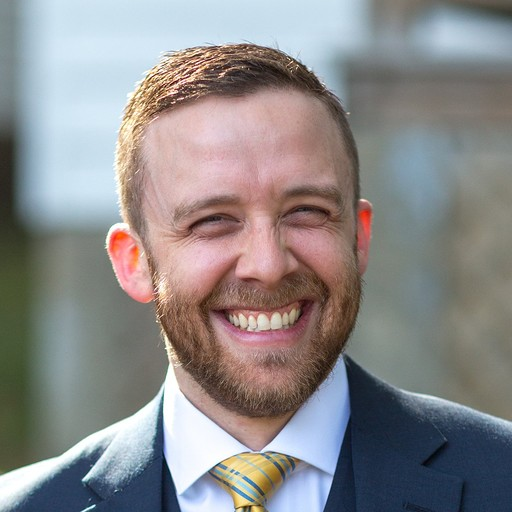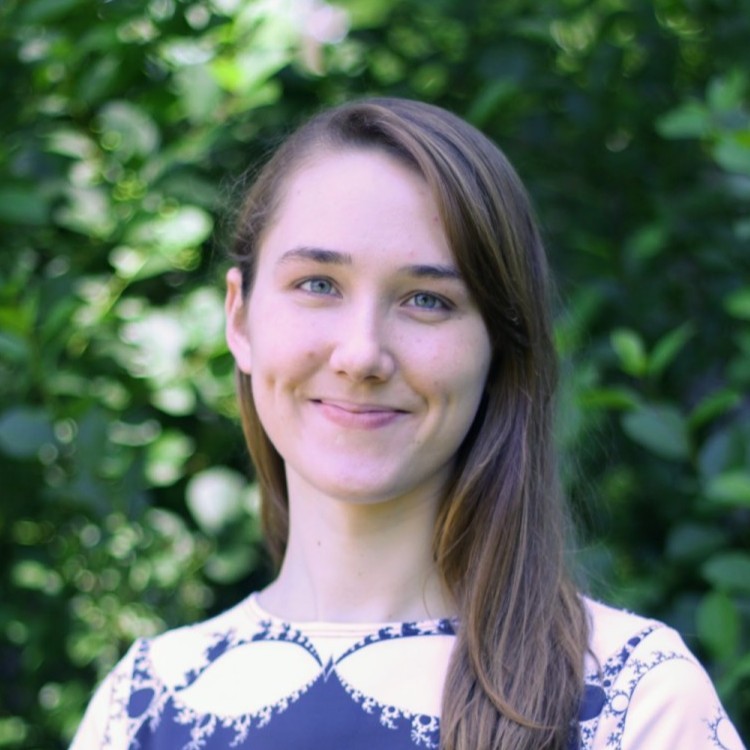Ginkgo’s SSI group empowers screening for genetic engineering – Part 1
Where rational engineering hits roadblocks, unbiased strain development can come in to help. Ginkgo Bioworks’ SSI team finds ways to accelerate unbiased techniques to take metabolic engineering to the next level, fast. The current and former head of SSI, Ariel Langevin and Adam Meyer, discuss how SSI complements rational strain engineering at Ginkgo.
Humans of Ginkgo Bioworks is an interview series featuring Sudeep Agarwala interviewing some of the brilliant folks at Ginkgo to learn more about the technology that makes our work possible.
— This is the first part of a two-part interview.—


Sudeep Agarwala: Ariel, you’re taking over Adam’s position as head of SSI, and Adam, you’re moving on to a more senior role in Ginkgo’s Foundry, so I’m really pleased to have this opportunity to speak with both of you about SSI–its past and where it’s going–during this transition.
But some background first — Adam, you’ve been at Ginkgo for six years now, and this entire time, you’ve been thinking about making mutants and screening them. How does that play into developing strains for industry?
Adam Meyer: For decades, you could even argue for centuries, industrial microbiology has been based on screening random mutants. And I mean that this is what scientists did before we had developed the technology to synthesize and transform cells with DNA–I mean, this is even before people knew that DNA carried information.
So in these cases, say you have a bacterial strain that you want to produce more protease, for example. Traditionally (and this is from before genetic engineering or even the ability to introduce DNA to organisms) you would take that strain and add a DNA damaging chemical that would create different mutants of the original strain. Most of the resulting mutants won’t perform any better, many won’t perform as well, but in some of them, you’d hit the DNA just right and come up with an organism that actually makes more protease, in this example.
Traditionally, this has taken a lot of human work: teams would test thousands, tens of thousands, of mutant strains one by one to find which one performs better compared to the parent. If you’re clever (or if you’re lucky) you don’t have to screen brute force like this, – you can just grow the whole population of mutants on a drug or some other specific condition that will only allow the best performers to live, meaning you can massively enrich for maybe only a handful of gifted mutants from among hundreds of millions of mutants. It’s a numbers game–the more mutants you can test at a time, either by screening each one individually or (if you can) by selectively enriching for just the strains you’re looking for, the better. You can think of this as Moore’s Law!
SA: I’d love to get into more detail: how does SSI play this numbers game?
AM: Well, our group, SSI, which stands for Selections and Strain Improvement, is in charge of identifying mutants with the performance we want. Our approach is generally to try to find ways to monitor these best performers in bulk, as opposed to screening each and every mutant one by one.
SSI asks, essentially: why not just put everything all into one big pool? Our group designs strategies so that instead of screening through each mutant, you can find a way to easily select the ones that have the best performance.
For example, we can have a fluorescent reporter in the strain so that cell that glows the brightest is the one that we want. So when we make the mutants, we can throw all of them into one flask, culture them, then, using cell-sorting technologies, select the cells that glow the brightest.
Maybe another example is with binding. Say you want to find a strain that binds a compound particularly well. Instead of testing each variant individually, you can flow them over a column and just select for the things that stick to that column, as opposed to doing a whole bunch of individual binding characterization studies.
Ariel Langevin: One thing I’d like to add is that approaches like this win when it comes to scale. In the traditional methods, screening 10,000 colonies is a big lift. When you’re able to convert an arrayed screening campaign into one where you’re just selecting for the best ones in a single pot, it’s much more straightforward to identify the best performers out of hundreds of millions of variants.
So it’s worth spending that time to think up ways to find ways to select the best players from a pooled approach–you can test many orders of magnitude more candidates and have a higher chance of success.
SA: This is a really great point Ariel. I’m curious how that works at Ginkgo: when do people decide to work with the SSI team? Does every project have some involvement from SSI?
AL: There’s a couple of factors that come into play when folks are deciding how to leverage the SSI team. Scale is the most important one. If a project needs to test millions of strains, it’s going to be very hard to fit that into 96 well plates, or even 384 or 1536-well plates for that matter. This really comes into play when our partner would prefer to stay away from genetic engineering of their strain because for their particular instance, genetic tool development would require quite some time, or because their market is looking for non-GM techniques for commercialization. Usually in these cases we turn to generating a large, diverse library of random mutants before down-selecting the best-performing strains.
There are a couple of tools we can deploy to do this in a pooled way, as Adam was talking about before. Historically, SSI has typically had a heavy focus on developing biosensors. This means, we engineer cells to express proteins that can bind to compounds of interest inside a cell and give an output signal–usually fluorescence. We’ve also seen some great advantages with anti-metabolites–compounds and proteins that interfere with a cell’s natural metabolism and result in growth changes. Both of these preliminary methods enable us to both screen huge numbers of strains, and also to identify the ones that are performing the best much more quickly compared to an arrayed screening approach that is still the gold-standard in many industries.
In 2022, Ginkgo made two acquisitions that complement these techniques. The first is EncapS–which encapsulates cells in nanoliter reactors. These nanoliter reactors can enable fluorescent readouts of the cell’s metabolism or productivity, and it’s a really elegant way to rapidly sort through hundreds of thousands of cells in a single run and monitor how they’re functioning.
The second technology is Adaptive Laboratory Evolution, or ALE, where you start with a population of cells and grow them continuously under different selective pressures. Over time, the cells that grow best in the conditions take over the population. It’s more nuanced than that, but that’s an overview.
So with these two technologies, we’ve been able to have more of an impact on projects that come through Ginkgo.
AM: That was great Ariel–may I add two things?
AL: Please do!
AM: You asked whether SSI is involved in every project. To be clear: not every project that comes into Ginkgo involves SSI. Not every phenotype is amenable to a pooled approach. When there is a fit, pooled methods are extremely powerful, so we end up contributing to a substantial fraction of programs.
And a good chunk of this work is scoped from the very beginning, and really comes into play, like Ariel said, when our partner really wants to stay away from synthetic DNA, and when we’re looking at random mutagenesis. We’ve seen a lot of people in food and agriculture with these requirements. In these instances, the team designing the project will say: “Hey, this project clearly has an organism that needs to have some sort of output that’s amenable to a pooled screen or selection.” This is where we sit down and plan where we step in and what we’re going to deliver.
But another good chunk of the work we see is: “Hey, we thought that we could hit the titer for the customer by engineering this particular enzyme or pathway, etc. But it turns out we’ve hit a wall and we can’t improve this strain anymore.” And that’s where SSI comes in: we’re called in to “unstuck” a project that has hit some really hard walls.
In my personal opinion, I think this is where SSI becomes really valuable. When “traditional strain engineering” has come up on limitations, we take an alternative approach. Rational engineering tries to tell the cell what to do. SSI’s approach is to give the cell millions, hundreds of millions of different options. And our team has the ability to screen through millions–hundreds of millions of different options and in doing this, we’re really asking the cell which option gets us where we want to go.
The two approaches really complement each other and work off of each other to deliver effective solutions for metabolic engineering.
—Stay tuned for Part 2, next week—
Work With Us
 Adam Meyer did his PhD work at UT Austin with Andy Ellington developing novel directed evolution methods, which he applied to the engineering of T7 RNA Polymerase. He continued developing these methods with Christopher Voigt at MIT, where he improved the performance of small molecule biosensors.
Adam Meyer did his PhD work at UT Austin with Andy Ellington developing novel directed evolution methods, which he applied to the engineering of T7 RNA Polymerase. He continued developing these methods with Christopher Voigt at MIT, where he improved the performance of small molecule biosensors.
He came to the Selections and Strain Improvement (SSI) Team at Ginkgo Bioworks in 2018, where he led the efforts for the team’s core technologies: 1-pot library generation, pooled screening, directed evolution, and genome editing. Adam led the SSI Team from 2020 through 2023, and is now part of the Foundry Leadership Team, with a focus on deploying the SSI, EncapS, and ALE technolgoies.
 Ariel Langevin, PhD, completed her doctoral work in Mary Dunlop’s group at Boston University, where she studied the dynamics and evolution of antibiotic resistance. She joined the SSI team at Ginkgo in 2020. At Ginkgo, she has focused on developing protocols for generating 1-pot libraries, workflows for multiplexed assays, and performing fluorescence-based and growth-coupled selections. Currently, she is the head of SSI at Ginkgo.
Ariel Langevin, PhD, completed her doctoral work in Mary Dunlop’s group at Boston University, where she studied the dynamics and evolution of antibiotic resistance. She joined the SSI team at Ginkgo in 2020. At Ginkgo, she has focused on developing protocols for generating 1-pot libraries, workflows for multiplexed assays, and performing fluorescence-based and growth-coupled selections. Currently, she is the head of SSI at Ginkgo.
